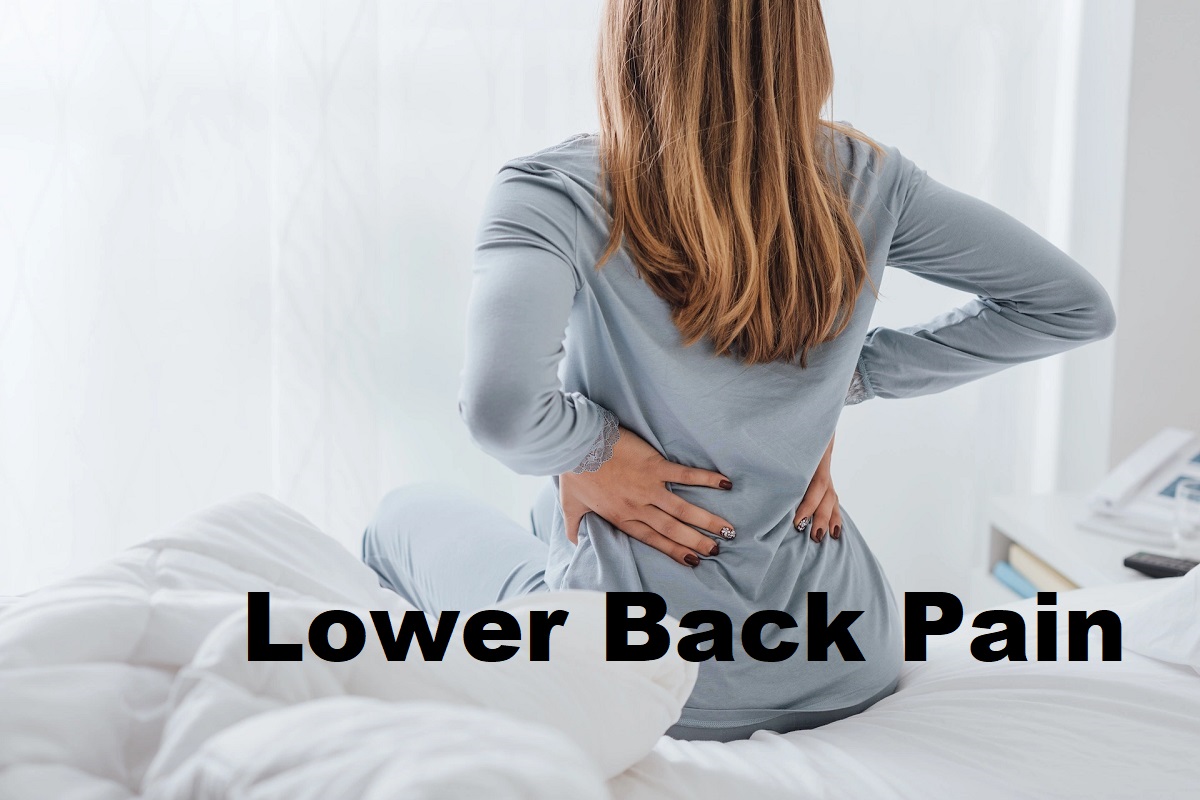Sorry, nothing in cart.
Lower Back Pain Treatment Effective Ways
- By admin
- |
- General Blog
- |
Lower back pain is considered a mere five vertebrae, which is a reduced number compared to the neck and mid-back. Moreover, these vertebrae perform considerable torque. The connection between your spine and pelvis is in your lower back, which supports the weight of your upper body. A great deal of tension and motion is applied to this region, which can result in deterioration and injuries.
Lower back pain is a prevalent medical condition distinguished by pain or distress in the lumbar region, encompassing the lower scleral column situated between the ribcage and the pelvis. This condition is frequently labeled “lumbago” or “lumbar pain.” The severity and duration of lower back pain can differ significantly, spanning from mild and transient distress to persistent and severe pain that may endure for several weeks or even months.
Causes Of Lower Back Pain
Back discomfort is often associated with the following conditions:
Ligament And Muscle Strain:

The most prevalent cause of low back pain is lumbar muscle strains and sprains. Because it supports the upper body and moves, twists, and bends, the lower back often strains and sprains. Lumbar muscular strain results from aberrant muscle fiber stretching or tearing. Lumbar sprain occurs when ligaments—tough bands of tissue that connect bones—tear. These might come from acute damage or gradual overuse. Debilitating lumbar strain or sprain.
Defective And Bulging Disks:
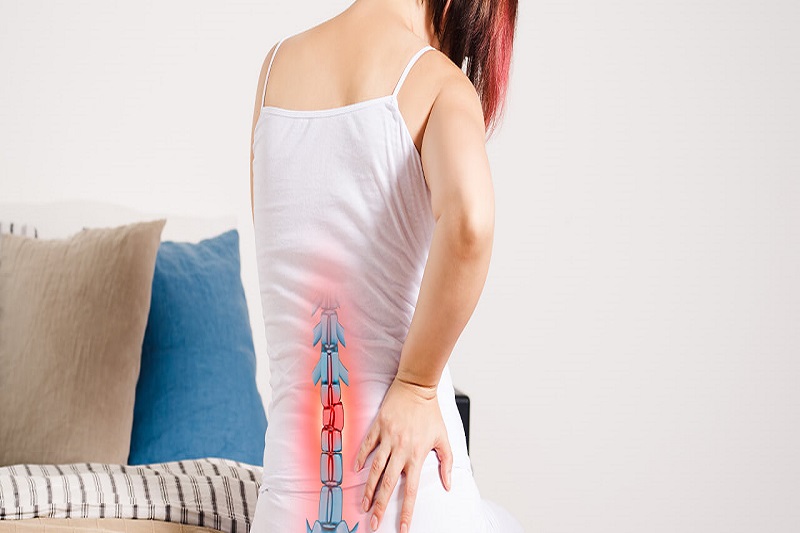
Herniated disks usually appear in the lower back, however, they can occur elsewhere along the vertebrae. A ruptured, protruding, or swollen disk is another name for this ailment. It often causes lower back pain, leg pain, and sciatica.
Symptoms Of Lower Back Pain
- A dull discomfort in the pelvis and/or hips
- Tension or spasms in the muscles
- Sciatica is a term for a sharp, tingling pain that radiates down one leg from your lower back.
- A pain that gets worse when you sit and goes away fast when you walk
- Clearly worsening pain in the morning
Types Of Lower Back Pain
1) Left Lower Back Pain
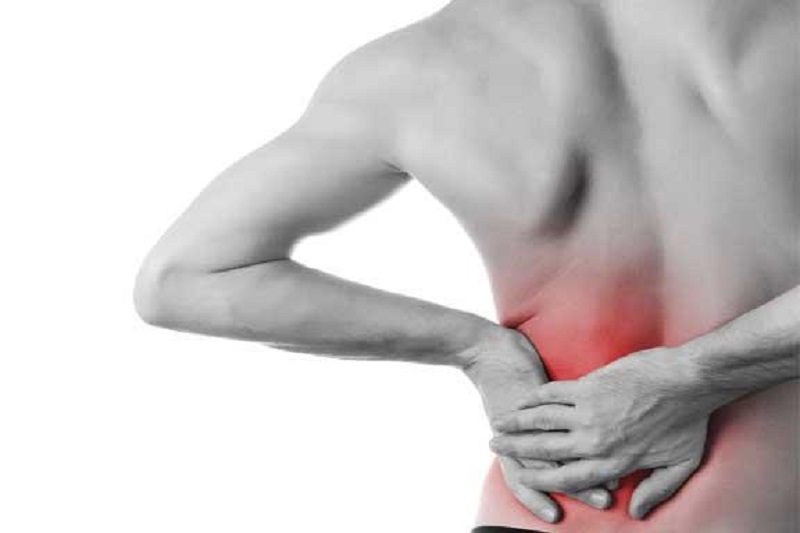
Lower left back pain, often known as left flank pain, is in the area above the hip or buttocks. Depending on the reason, people may experience a shooting pain beneath the skin or a dull soreness in the back.
2) Lower Middle Back Pain
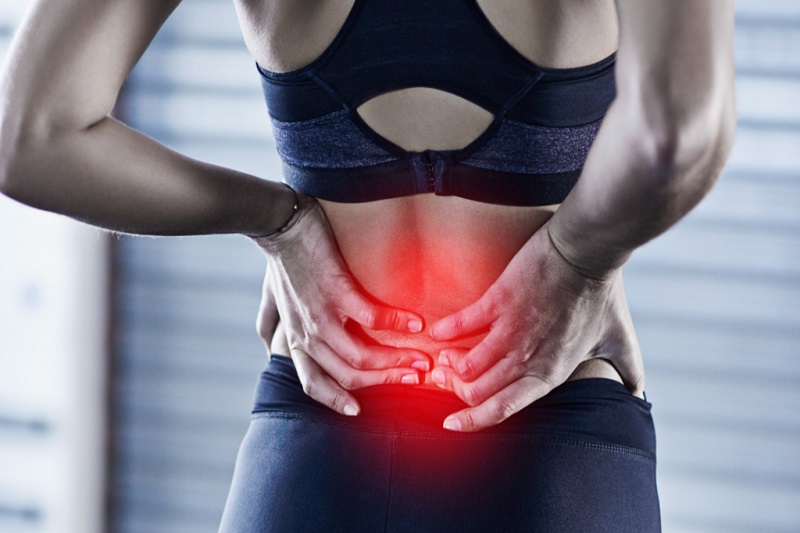
The term ‘middle back’ frequently refers to the thoracic spine, which is the region of the back between the rib cage and the base of the neck. This area contains 12 spinal disks, multiple vertebrae, as well as several muscles and ligaments. Back pain can result from damage or irritation to these structures.
3) Lower Right Back Pain
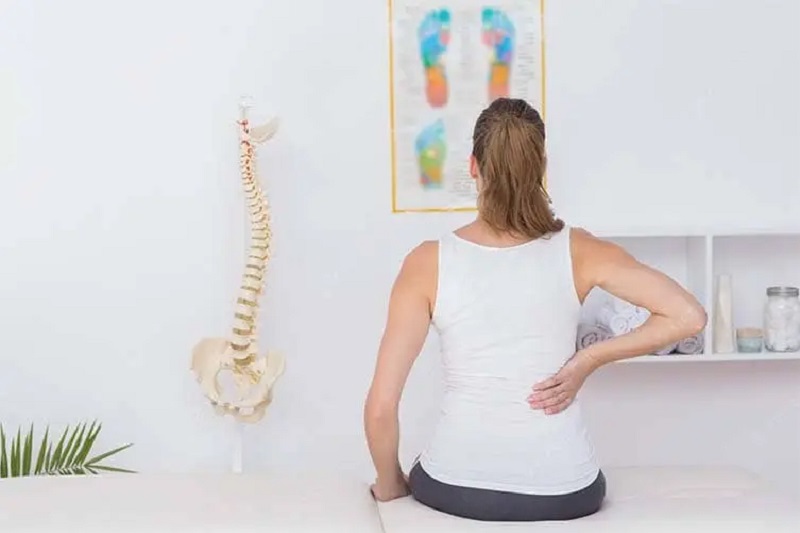
Lower back discomfort on the right side might be caused by small issues such as a pulled muscle or a misplaced spine. Lower right back pain might potentially suggest more serious issues, such as kidney stones or spinal stenosis.
What Are Risk Factors Of Lower Back Pain?
1) Age
Between the ages of thirty and forty, low back pain usually manifests itself initially. It’s more likely that you’ll start to feel some pain discomfort as you age.
2) Fitness Level
People who are not physically fit are more likely to experience back discomfort. Weak stomach and back muscles may not be able to entirely support the backbone. Furthermore, regular activity is essential. Compared to people who make moderate daily activity a habit, those who exercise heavily after being idle for the entire week are more likely to experience excruciating back injuries.
3) Weight
Having excess weight puts additional strain on the spine.
4) Workplace Danger Factors
Certain jobs are simply not very good for the back. You face the danger of getting hurt or experiencing back discomfort if your profession entails heavy lifting, pushing, or tugging, especially if it involves twisting or vibrating the spine.
A desk job or inactive work can also cause or aggravate pain, especially if you have poor posture or spend all day in an uncomfortable chair.
5) Heredity
It’s challenging to overcome inherited problems. Genetics play a role in certain back pain causes, such as ankylosing spondylitis, a kind of arthritis that affects the spine.
How Is Lower Back Pain Diagnosed?
A neurosurgeon arrives at a diagnosis through the evaluation of clinical history, symptoms, physical examination, and diagnostic study results. Certain patients may receive conservative treatment; however, in cases where conservative measures prove to be ineffective, the doctor may proceed with additional diagnostic procedures such as lower back imaging studies and the following:
- CT (Computerized Tomography) scan
- Discography
- Electromyography (EMG)
- Nerve Conduction Studies (NCS)
- Magnetic Resonance Imaging (MRI)
What Is Lower Back Exercise For Pain Relief?
You may want to lie down, but exercising is healthy for your back. Lower back pain exercises can help to strengthen the muscles in the back, stomach, and legs. They support your spine and relieve back discomfort. Before beginning any back pain workout program, consult with your doctor. Some workouts may be contraindicated or even hazardous depending on the reason and severity of your pain.
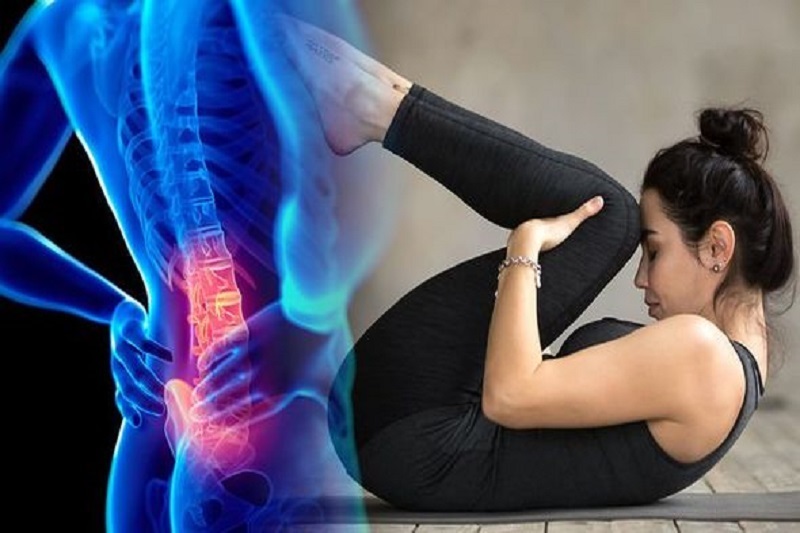
- Partial Crunches
- Hamstring Flexes
- Sits against a wall
- Back Extensions from Press-ups
- Chest to Knee
- Aerobic Workout
What Is Treatment For Lower Back Pain?
Many patients find that resting and using over-the-counter pain medicines as at-home therapies help ease lower back discomfort. But it’s time to contact a specialist if, after a few weeks, the discomfort doesn’t get better.
Our group provides all available treatments for low back pain, such as:
Chiropractic Care:
Your bones and joints are guided back into their proper positions by a chiropractor using light pressure. Study up on the benefits of chiropractic therapy.
Massage Therapy:
With a soothing touch, our certified massage therapists release tense back muscles and ligaments. Learn more about therapeutic massage.
Physical Therapy:
With targeted exercises, our therapists can help you increase your lower back’s range of motion and flexibility. Learn more about physical therapy for orthopedics.
Medication Treatment
Low back pain is frequently treated with medication. The variation of causes and intensities of lumbar pain also means that the drugs used to treat it will differ. Nonsteroidal anti-inflammatory drugs such as Celeheal 200 mg, can be helpful for certain people.
Stronger drugs, such as opioids Tapentadol (Aspadol 100mg), are required for others. As usual, you should talk to your doctor about your pharmaceutical alternatives because long-term use of narcotic drugs increases the risk of abuse, addiction, and dependence.
Care And Prevention Of Lower Back Pain
- Stretch before working out
- Avoid standing for long periods
- Avoid wearing high heels
- Look for lower back support when sitting for several hours
- Sleep on your side with knees bent
- Practice yoga or Pilates
- Don’t stress
- Stay active, but don’t overdo it
Conclusion
It is anticipated that the module has been useful, and if you would like to look into it more, references have been included. This page contains some helpful presentations and resources for primary care pain management. To sum up, the following are the main takeaways for basic mechanical low back pain:
- It ought to be handled by primary care
- Self-management is essential; if pain does not go away, try basic analgesics first, followed by manual therapy, exercise, and acupuncture.
Frequently Asked Questions
Q1) How Do I Relieve Lower Back Pain?
Ans: Walking, swimming, yoga, cycling, or simple stretching all boost blood flow and promote healing. Strengthening your core muscles (abdominal and back) might also help relieve back discomfort. Without exercise, the muscles around your spine may become stiff or weak, exacerbating low back discomfort.
Q2) What Are 3 Causes Of Lower Back Pain?
Ans: There are 3 causes of lower back pain:
- Sprains and strains
- Fracture
- Sciatica
Q3) How Do I Know If My Lower Back Pain Is Serious?
Ans: If the discomfort lasts longer than four weeks. If the pain continues to intensify over time. If you experience any other symptoms, such as a fever, considerable weight loss or gain, loss of function or weakness in your extremities, urinary issues, etc., consult your doctor.
Q4) How Can I Decompress My Lower Back At Home?
Ans: To begin, you must lie flat on the floor. Place a chair right next to you. Then, slowly place your lower legs on the chair, with the chair’s corner on the back of your knees.
Q5) What Organ Is Related To Lower Back Pain?
Ans: Organs such as the kidneys, colon, appendix, liver, gallbladder, pancreas, and reproductive organs can cause lower back pain.
Q6) What Aggravates Lower Back Pain?
Ans: Poor sitting posture, repetitive bending, lifting heavy objects, and smoking, for example, can all aggravate low back discomfort. Even if you are receiving therapy, it is possible that it will persist if these and other variables continue to work against you.
Q7) When Should I Go To The ER For Left Side Back Pain?
Ans: If your back pain is severe and not improved by rest, you should go to the nearest emergency room right away. If the pain is accompanied by any of the following symptoms, you should seek immediate medical attention: Fever. Numbness.
Q8) Why Does My Lower Back Hurt On The Right Side?
Ans: Lower right back pain can be caused by a spine injury or lower back diseases such as herniated discs, osteoarthritis, spondylolisthesis, spinal stenosis, or another abnormality of the spine.
Q9) What Organ Is On The Lower Right Side Of The Lower Back?
Ans: On the lower right side of your body are the appendix, intestines, ureter, lower kidney, and one of your ovaries (if present).
Q10) How Do You Stretch A Stiff Lower Back?
Ans: Sit in a chair with your arms by your sides and your feet on the floor. Gently rotate your upper body to the right. Over your right shoulder, your focus should be directed. Place your right hand on the chair’s back and your left arm on your right leg until you feel a mild stretch.
 English
English
 French
French  German
German